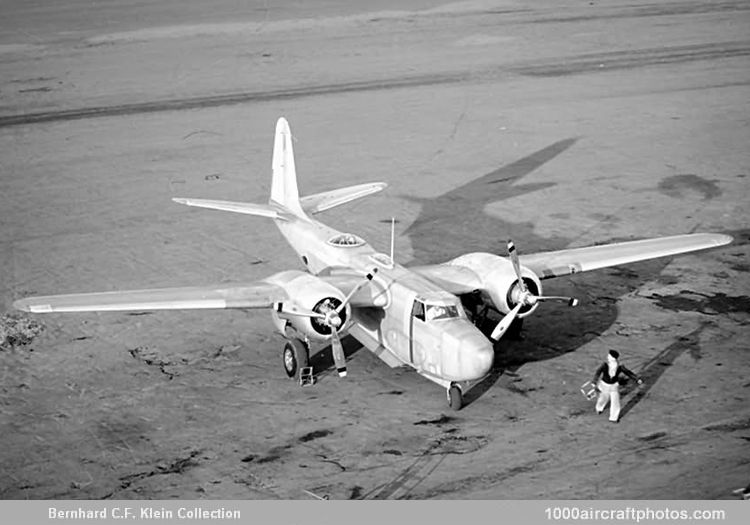07/31/2019. Remarks by Johan Visschedijk: "The Douglas Model 7B formed the basis for the later DB-7/A-20 and A-26 attack bombers series and was a development of the Northrop Model 7. John Knudsen Northrop formed the Northrop Corporation in January 1932 with the help of his friend and former employer Donald Douglas, the Douglas corporation holding 51% of the stock.
Development of the series was undertaken in March 1936 as a private venture when Ed Heinemann, under the supervision of John Northrop, began to design the Northrop 7A. Intended to fulfil observation and attack missions, the Northrop 7A was twin-engined, with high-mounted wings and a tricycle landing gear. Northrop built a full-scale mock-up of the 7A but work was suspended in December 1936, at a time when 50% of the engineering drawings had been completed, as the US Army requirements were rapidly changing.
By this time Northrop Corporation ran into labor and financial problems, where upon Douglas acquired the remaining 49% stock on April 5, 1937. Continuing problems forced Douglas to dissolve the Northrop Corporation on September 8, 1937. Soon thereafter the former facilities Northrop company were operated as the El Segundo Division of Douglas.
Work on a more powerful and larger twin-engined attack bomber began anew at El Segundo in the autumn of 1937 to meet the requirements of the USAAC which wanted an aircraft to be operated solely in the attack role and possessing a range of 1,200 mls (1,930 km) with a 1,200 lb (544 kg) bomb load. Designated 7B, the new aircraft was designed by a team led by Project Engineer Weidenheimer.
Retaining the high-wing configuration of the 7A, the 7B was powered by two 1,100 hp Pratt & Whitney R-1830-S3C3-G fourteen-cylinder air-cooled radials and had an internal fuel capacity of 370 gal (1,401 l). The 7B was fitted 0.30 in (7.62 mm) machine guns on flexible mounts in dorsal and ventral positions. It could be fitted with either a glazed nose with accommodation for a bomb-aimer and his sighting equipment or an unglazed nose carrying two 0.50 in (12.7 mm) and six 0.30 in (7.62 mm) machine guns firing forward. Bomb load included eighty 17 lb (7.7 kg) bombs or one 2,000 lb (908 kg) bomb.
First flown at Mines Field, Los Angeles, on October 26, 1938, the 7B soon attracted the attention of the French Purchasing Commission in the United States. As a result of this French interest, and in spite of the USAAC's own urgent requirements, Douglas was permitted to demonstrate it to French representatives. Unfortunately, while being flown with a French officer on board, the 7B crashed on January 23, 1939, during a single-engine fly-past and its Douglas pilot, John Cable, was killed. The French staff, however, had seen enough to recommend acquisition of a modified version, the DB-7 (Douglas Bomber 7)."
